Kalmükien |
|
|
|
| Übersicht – Contents: | |
Kalmükien |
|
|
|
| Übersicht – Contents: | |
Flagge – Flag: |
|
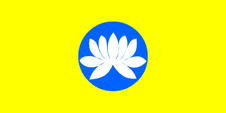 |
Nationalflagge – national flag, Seitenverhältnis – ratio = 1:2, Quelle/Source, nach/by: Flaggen Enzyklopädie |
|
|
|
historische Flaggen – historical Flags: |
|
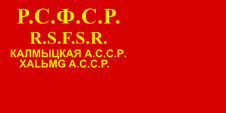 |
1938–1943, Flagge der Autonomen Sowjetrepublik – flag of the autonomous soviet republic, Seitenverhältnis – ratio = 1:2, Quelle/Source, nach/by: World Statesmen |
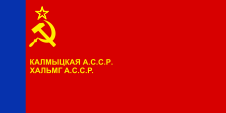 |
1958–1991, Flagge der Autonomen Sowjetrepublik – flag of the autonomous soviet republic, Seitenverhältnis – ratio = 1:2, Quelle/Source, nach/by: World Statesmen |
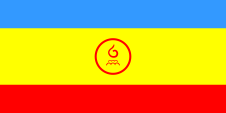 |
1992–1993, Nationalflagge – national flag, Seitenverhältnis – ratio = 1:2, Quelle/Source, nach/by: Wikipedia (EN) |
|
siehe auch – look also: Flaggengeschichte der Sowjetrepubliken der UdSSR – flag history of the soviet republics of the USSR |
|
|
|
|
|
|
|
Bedeutung/Ursprung der Flagge – Meaning/Origin of the Flag: |
|
| Die Flagge wurde am 30.07.1993 angenommen, im Format 1:2. | The flag was adopted on 30th of July in 1992, in the format-ratio of 1:2. |
| Es ist ein einfarbiges gelbes Grundtuch, in dessen Mitte sich das kalmykische Staatssymbol befindet. Dieses ist eine weiße Lotosblüte auf einer blauen Scheibe. Die Blüte steht für Reinheit, Wiedergeburt und Glück. Die Farbe Gelb ist ein Hinweis auf die Sonne, es steht für das Volk und die buddhistische Staatsreligion. Blau ist die historische Farbe der Mongolen. | It is a
single-coloured yellow bunting, in the middle of it is placed the Kalmyk state symbol. This is a white lotus blossom on a blue disk.
The flower stands for purity, rebirth and happiness. The colour yellow is a reference to the sun, it stands for the people and the Buddhist state religion. Blue is the historical color of the Mongols. |
| Die Flaggen, die zu Sowjet-Zeiten verwendet wurden, entsprachen alle dem immer gleichen Schema, wie es für Sowjetische Autonome Republiken vorgesehen war: Zwischen 1923 und 1937 oft nur ein einfabiges rotes Flaggentuch mit einer goldenen Inschrift, die den Landesnamen zeigte. Manchmal nur als Abkürzung, manchmal mit vollem Namen, manchmal nur in Russisch oder auch mehrsprachig. Ab etwa 1937 wurden manchmal noch Hammer, Sichel und Stern ergänzt. Ab etwa der Mitte der 50-er Jahre wurden mehrfarbige Flaggen für die Republiken der Sowjetunion eingeführt, deren Strickmuster die untergeordneten Autonomen Sowjetrepubliken zu übernehmen hatten. |
The flags, which were used in the Soviet era corresponded all to the same pattern as it was intended for the Soviet Autonomous Republics:
Between 1923 and 1937 frequently only a single-coloured red bunting with a golden inscription, showing the name of the country. Sometimes only as a shortcut, sometimes the full name, sometimes only in Russian or even multilingual. From about 1937 hammer, sickle and star were sometimes added. From about the mid-50s multicolored flags were introduced for the republics of the Soviet Union, whose knitting patterns had to be taken over by the subordinated autonomous Soviet republics. |
| Quelle/Source: Volker Preuß, Flaggen Enzyklopädie | |
|
|
|
Wappen – Coat of Arms: |
|
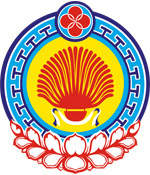 |
Wappen von Kalmükien – coat of arms of Kalmykia, Quelle/Source: Russiatrek |
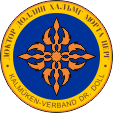 |
1942–1945, Abzeichen der Kalmüken in der Deutschen Wehrmacht – badge of Kalmyks in the German Wehrmacht, Quelle/Source: Avantgarde für Europa |
|
|
|
Landkarten – Maps: |
geographische Lage in Russland – geographical position within Russia: |
Landkarte des Landes – map of the country: |
|
|
Zahlen und Fakten – Numbers and Facts: |
|
|
|
|
|
|
|
|
|
|
|
|
|
|
|
|
|
|
|
|
Geschichte: |
| 1420 · Zerfall des Reiches der
Goldenen Horde in mehrere einzelne
Khanate (u.a. Khanat Astrachan, Khanat Sibir, Khanat Krim, Khanat Kasan),
das Gebiet des heutigen Kalmükien gehört zum Khanat Astrachan und wird
noch von Tataren, den Nachfahren der Goldenen Horde besiedelt 1556 · Eroberung des Khanats Astrachan durch Russland ca. 1600 · Kosakenheere (Terek-Kosaken) durchziehen das heutige Kalmükien um die russische Grenze im Süden zu sichern 1630 · die Kalmüken wandern – ursprünglich aus der westlichen Mongolei kommend – in ihr heutiges Siedlungsgebiet ein 1771 · der größte Teil der Kalmüken (Torguten) kehrt wahrscheinlich unter dem Druck der Kosaken unter großen Verlusten zurück nach Ostturkestan/Mongolei 1920 · Errichtung der Sowjetdiktatur, Bildung des Autonomen Bezirks (Oblast) der Kalmüken 1936 · Umwandlung des Autonomen Bezirks (Oblast) der Kalmüken in die Kalmükische Autonome Sozialistische Sowjetrepublik 1943–1944 · Deportation der Kalmüken nach Sibirien 1957 · Rückkehr der Überlebenden 31.12.1991 · die Sowjetunion löst sich auf, die Verfassung der Russischen Sozialistischen Föderativen Sowjetrepublik (RSFSR, Russland), ein ehemaliger Teilstaat der Sowjetunion bleibt vorerst in Kraft 1992 · Proklamation der Autonomen Republik Kalmükien 25.12.1993 · eine neue Verfassung für Russland (Russische Föderation) tritt in Kraft, das Verhältnis zu den Gliedern der Föderation wird damit neu geregelt |
|
|
History: |
| 1420 · disintegration of the Empire of the
Golden Horde in several
particular Khanates (e.g. Khanate of Astrakhan, Khanate of Sibir, Khanate
of Crimea, Khanate of Casan), the area of the today's Kalmykia belongs to
the Khanate of Astrakhan and is still settled by Tatars, the leftovers of
the Golden Horde 1556 · conquest of the Khanate of Astrakhan by Russia ca. 1600 · cossack armies (Terek Cossacks) range the today's Kalmykia to secure the Russian frontier in the south 1630 · the Kalmyks immigrate into their today's settlement region – they came originally from the western Mongolia 1771 · the largest part of the Kalmyks (Torguts) recurs under great losses probably under pressure of the cossacks back to Eastern Turkestan / Mongolia 1920 · establishment of the Soviet Dictatorship, establishment of the Autonomous District (Oblast) of the Kalmyks 1936 · transformation of the Autonomous District (Oblast) of the Kalmyks into the Kalmykian Autonomous Socialistic Soviet Republic 1943–1944 · deportation of the Kalmyks to Sibiria 1957 · return of the survivors 31st of December in 1991 · the Soviet Union dissolves, the constitution of the Russian Socialist Federative Soviet Republic (RSFSR, Russia), a former substate of the Soviet Union, remains in force for the time being 1992 · proclamation of the Autonomous Republic of Kalmykia 25th of December in 1993 · a new constitution for Russia (Russian Federation) comes into force, and the relationships with the members of the federation is re-regulated in this way |
| Quelle/Source: Atlas zur Geschichte, World Statesmen, Russiatrek, Die Völker der Erde, Discovery '97, Wikipedia (D) |
|
|